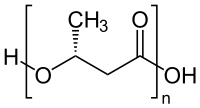What is the most effective way to remove them? Ive seen many products like chemipure, reactors, biopellets, prime, protein skimmers, etc. Which is the best?
I'm assuming a protein skimmer is mandatory. Live sand and good circulation too, so not to create a detritus sump. Feed and stock less. Use RODI. But after that its awash. What is the best method to remove them. I'm thinking of getting a sump with chaeto and a deep sand bed, maybe a reactor of some sort as well. I'm concerned a typical sump rated for your aquarium simply cant carry enough sand or chaeto to make a large impact.
What method works for you?
I'm assuming a protein skimmer is mandatory. Live sand and good circulation too, so not to create a detritus sump. Feed and stock less. Use RODI. But after that its awash. What is the best method to remove them. I'm thinking of getting a sump with chaeto and a deep sand bed, maybe a reactor of some sort as well. I'm concerned a typical sump rated for your aquarium simply cant carry enough sand or chaeto to make a large impact.
What method works for you?



















